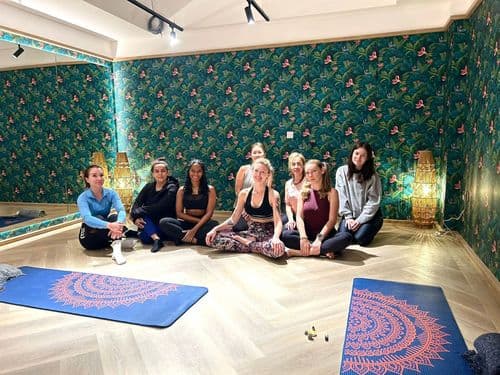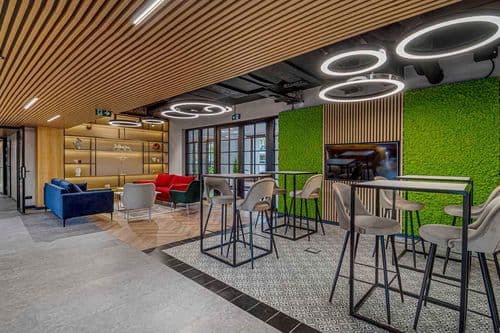Rise of the Self-Sufficient City
Rise of the Self-Sufficient City by Vonder
Thinking ahead with the lessons of the pandemic in mind, we can plan better and build better cities.
Whatever the new normal may be, we should consider how our lives have changed during the lockdown and learn what we can improve for the future. For those of us living in cities, it’s clear that we need a more self-sufficient city and a different way of looking at our surroundings.
As worldwide lockdowns swept across the globe, city and local governments consider how they might best implement measures to boost sustainability, mobility, and food availability. More new tech was put into place to help smart cities get smarter, and to put the environment first, with people in mind. Green spaces and additional bike lanes have also been added to many cities.
City as a resource, community as a support system
A new city is being designed to weather crises better together: it has roofs covered in solar panels, wooden apartment blocks built of cross-laminated timber (a renewable construction material), greenhouses, rooftop farms, drone-friendly terraces, shared 3D printers available, and plenty of space to work from home. This developing community near Beijing, China, will be the exemplar of “a new standard in the post-Covid era”, an urban innovation zone, according to Chinese President Xi Jinping. And of course, we would all be wise to consider what our takeaways will be from this new conceptual community.
What have we felt we all missed most in the times we really couldn’t do much more than hunker down?
Well, almost any of the necessities and amenities that came in with difficulty and great expense from outside should be (at least in the short term) able to be produced locally.
Need to run out to the grocery? No, you don’t. Step out to the rooftop and pick some vegetables for your next meal. Pop next door to the shared 3D printing facilities and organize yourself a new chair, a bicycle helmet, a hot pair of shoes, or the perfect hipper-than-thou glasses. You might still need to get toilet paper stocked up.
Vicente Guallart, founder of the Barcelona-based Guallart Architects firm, who won a contest to design this project, had this to say:
"We cannot continue designing cities and buildings as if nothing had happened.”
He continued, “Our proposal stems from the need to provide solutions to the various crises that are taking place, to create a new urban life based in the circular bio-economy."
What is a circular economy? As it sounds, a system where reuse, reduce, recycle comes into play. Waste and pollution are minimised. The environment is top of mind, as it has to be. Bioeconomy simply means using renewable energy and resources to make the food we eat, the energy we use, and the materials we find most helpful in our everyday lives.
And of course, like most brilliant plans, this has been a team effort.
“We developed this project during confinement,” explained studio director Honorata Grzesikowska. “The entire team worked from home and we decided to include all those aspects that could make our lives better.”
To make this work, it takes, as they say, a village. And this village will be made up of four large apartment blocks, in a traditional European-style square inclusive of a courtyard at the center, with up-to-date Chinese housing towers, well stocked with greenhouses.
Sounds like a self-sufficient city? It gets better.
Housing will be a solid mixture of shops, offices, a food market, a swimming pool, a child care facility, and a fire station. And within that, small-scale co-working digital factories would use the shared 3D printers we mentioned earlier plus rapid prototyping machinery to create replacements on an as-needed basis for any missing or broken items. A truly well-considered response to a possible supply chain disruption.
On top of all that, this would all come with 5G as a baseline standard. Flats are planned to include spaces ideal for remote working.
Whether for singletons, partnered folks with or without kids, students or the elderly, or even multigenerational families living together, different layouts for each flat type have been set up to accommodate a variety of lifestyles, all part of a common dream, all sharing the facilities that make the best sense for community use.
In the past, the devastation of epidemics has led to a major rethinking of the way we live our lives and how we plan our cities. What seems obvious to us today, like sewage systems and clean drinking water, or things like air and light and ventilation in homes, were in most of history not thought of at all until after a plague. And, in much of the world, these things are sadly still not available. But we do know that they help, and we have an idea that we should do better. Slowly, things tend to improve. In the aftermath of global disasters such as a pandemic, our brains gather information and accelerate change. Innovation has always been our path to surviving and thriving. Thinking sustainably, thinking community, is the next step in what history will see as the obvious.
Guallart sees the coronavirus as a catalyst for much-needed change.
"This pandemic has accelerated the future," stated Guallart.
"Cities have seen what they are capable of if they face a challenge, and therefore decisions related to climate change and its impact on the urban model, on the design of buildings, on mobility, should be made immediately."
Are we ready for the future? More than ready! Bring it on.
At Vonder, we understand that co-living and sustainability are a big part of building modern communities. It’s not just about what we need individually, it’s also how we can go further together, do more for each other, and make all our lives better as a whole with the right intention and follow-through. We believe this to be true across our all inclusive flats to rent in London, Berlin, Warsaw, and Dubai.

Vonder Community Yoga Classes in Wembley, Munich and Beyond
Community Yoga Classes in Wembley, Munich, Warsaw & More
READ MORE
Co living East London With Vonder Shoreditch
Experience the best of modern living in London
READ MORE
What are Community Spaces & why are they important?
What are Community Spaces & why they matter by Vonder
READ MORE